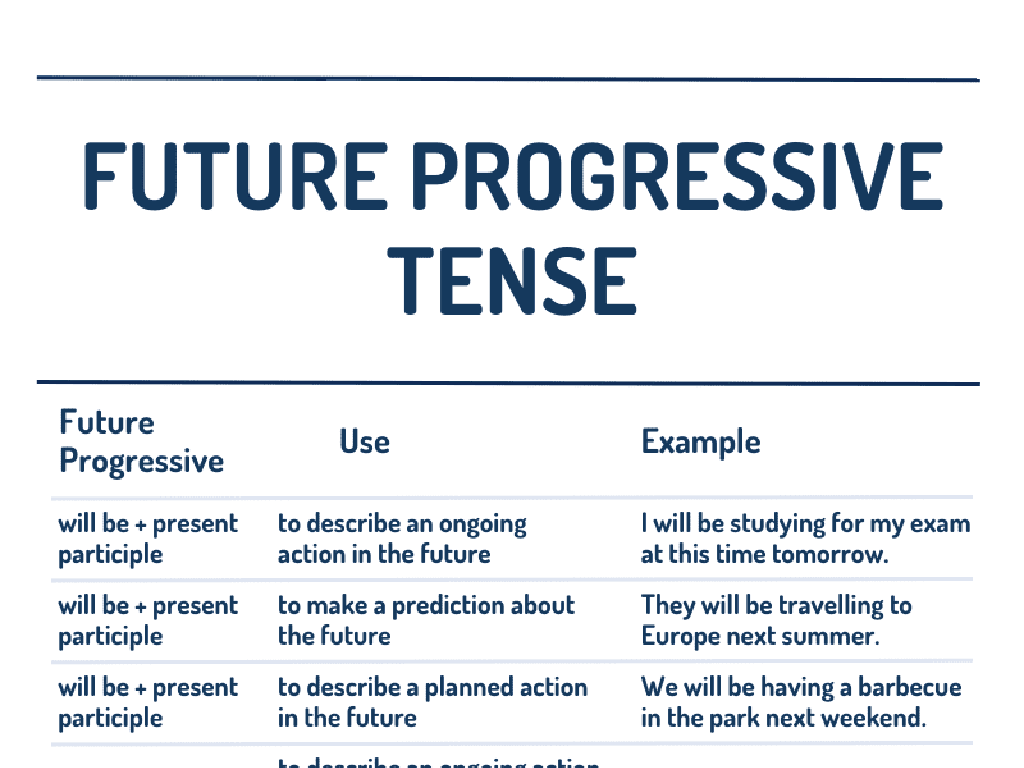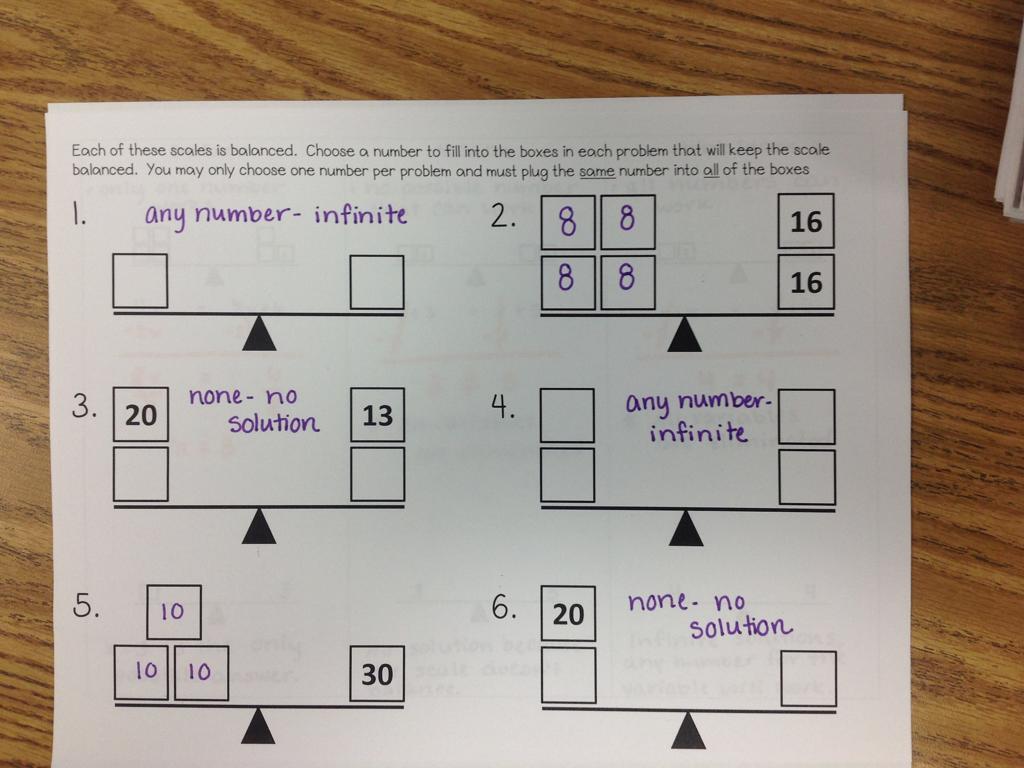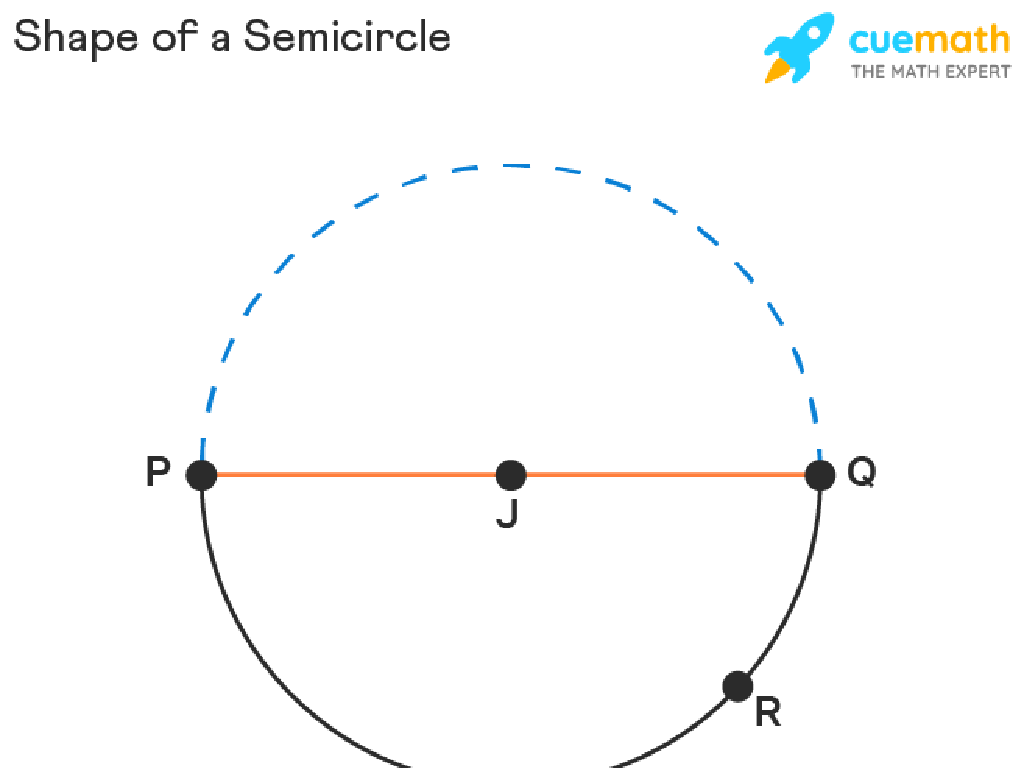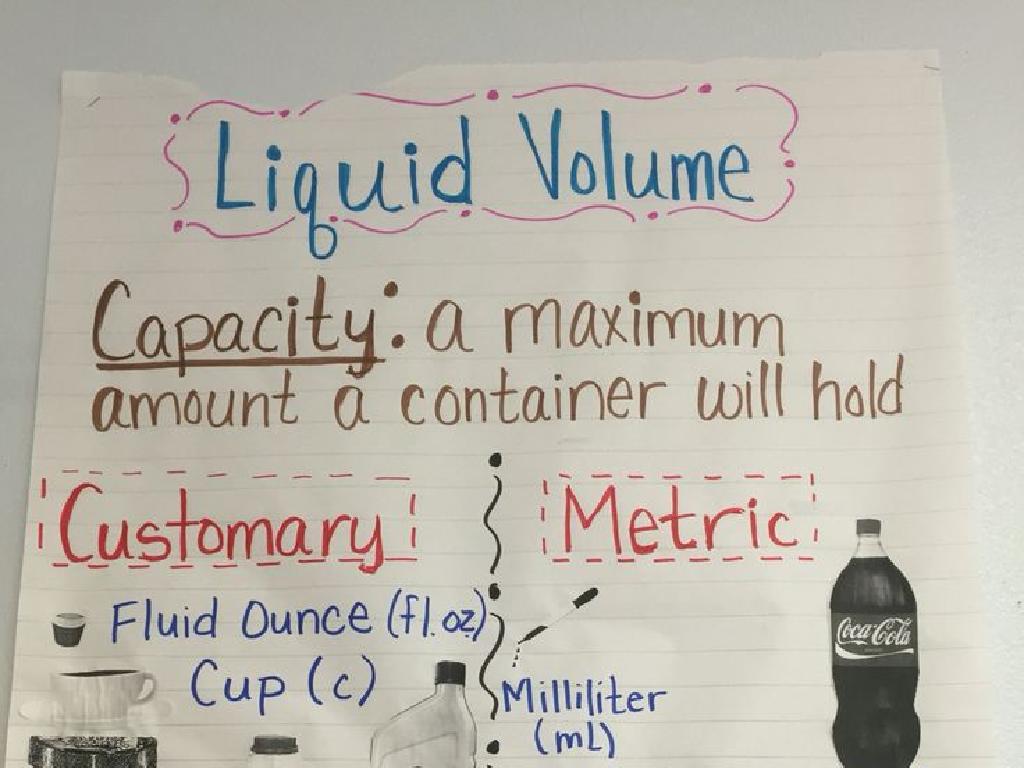Calculate Unit Rates With Fractions
Subject: Math
Grade: Seventh grade
Topic: Ratios, Rates, And Proportions
Please LOG IN to download the presentation. Access is available to registered users only.
View More Content
Introduction to Unit Rates
– Understanding ratios and rates
– Ratios compare two quantities, rates compare different units
– Defining a unit rate
– A unit rate describes how many units of the first type correspond to one unit of the second type
– Real-life unit rate examples
– Miles per hour in driving, price per item when shopping
– Calculating unit rates with fractions
– Divide the numerator by the denominator to find the rate per one unit
|
Begin by explaining the concept of ratios and how they relate to rates, emphasizing the comparison of two different quantities. Introduce the term ‘unit rate’ and explain that it is a way to compare rates using a single unit. Provide real-life examples to illustrate the concept, such as how fast a car travels (miles per hour) or the cost of an item (price per item). Then, guide students through the process of calculating unit rates with fractions, ensuring they understand how to divide the numerator by the denominator to find the rate per one unit. Encourage students to practice with examples and prepare questions for the next class.
Understanding Fractions: Unit Rates
– Quick review of fractions
– Fractions represent parts of a whole
– Numerator vs. Denominator
– Top number (numerator) over bottom number (denominator)
– Fractions in daily life
– Used in cooking, time management, shopping
– Calculating unit rates with fractions
– Divide the numerator by the denominator to find the rate per one unit
|
Begin with a brief review of fractions to ensure students recall that fractions represent parts of a whole. Clarify the roles of the numerator and denominator. Illustrate the prevalence of fractions in everyday life, such as in recipes (half a cup of sugar), time (quarter past the hour), and shopping (third off the price). Then, introduce the concept of unit rates with fractions, explaining that to find the rate per one unit, they divide the numerator by the denominator. Provide examples such as if a half-cup of sugar is needed for 2 cookies, then the unit rate is 1/4 cup of sugar per cookie. Encourage students to think of other examples where they encounter fractions and to practice calculating unit rates in various contexts.
Calculating Unit Rates with Fractions
– Understanding unit rates
– Unit rate formula application
rate = quantity / time, e.g., 150 miles / 3 hours
– Real-world unit rate examples
miles per hour (speed), price per item (cost efficiency)
– Practice with fractions
Calculate rates like 1/2 mile per 1/4 hour
|
This slide introduces the concept of unit rates, which is a comparison of any two separate but related measurements where the second term is 1. It’s crucial for students to grasp that unit rates are a way to compare how much of something exists or happens in one unit of measure. Use the formula ‘rate = quantity / time’ to show how to calculate unit rates. Provide relatable examples such as determining the speed of a car in miles per hour or the cost of an item per piece. Emphasize the importance of unit rates in everyday life for making informed decisions. Lastly, incorporate fractions into practice problems to ensure students understand how to calculate unit rates when dealing with fractional quantities.
Calculating Unit Rates with Fractions
– Convert complex rates to unit rates
– Use division to simplify fractions
– Divide the numerator by the denominator to simplify
– Practice: 1/2 mile per 1/4 hour
– How many miles can be covered in one hour?
– Understanding unit rates in context
– Unit rates help compare different quantities effectively
|
This slide introduces the concept of unit rates with fractions, which is a foundational skill in understanding ratios and proportions. Start by explaining that a unit rate is a rate with a denominator of one. Show students how to convert complex rates into unit rates by dividing the given rate’s numerator by its denominator. For the practice problem, guide students through the process of calculating how many miles can be covered in one hour if 1/2 mile is covered in 1/4 hour. This will involve dividing 1/2 by 1/4, which is the same as multiplying 1/2 by the reciprocal of 1/4. Emphasize the importance of understanding unit rates in real-world contexts, such as determining speed, cost per item, or other comparisons.
Real-World Problems: Unit Rates with Fractions
– Apply unit rates with fractions
– Example: Car travels 3/4 mile in 1/2 hour
– How many miles does the car travel in one hour?
– Calculate the unit rate in mph
– Divide the distance by time to find mph
– Discuss problem-solving approach
– Steps: Identify fractions, find common denominator, divide to get unit rate
|
This slide aims to help students apply their knowledge of unit rates with fractions to real-world scenarios. Start by explaining the concept of a unit rate as a comparison of any two measurements where one of the terms is 1. Use the example of a car’s travel distance to illustrate how to calculate the unit rate in miles per hour. Emphasize the importance of understanding the problem, identifying the given fractions, finding a common denominator if necessary, and performing the division to solve for the unit rate. Encourage students to practice with various examples and to discuss their methods and reasoning with the class.
Class Activity: Calculate Your Own Unit Rates!
– Pair up and find fractional rates
– Look for examples like pages per book or snacks per pack
– Calculate the unit rates
– Use division to find rates per one unit
– Present your findings
– Share with the class how you calculated
– Reflect on the activity
– Discuss what these rates tell us about real-life situations
|
This interactive activity is designed to help students apply their knowledge of unit rates with fractions in a practical context. Students should work in pairs to identify items or scenarios within the classroom or school that can be expressed as a rate with a fraction, such as the number of pages per half a book or the amount of snacks per quarter of a pack. After finding suitable examples, they will use division to calculate the unit rate, which is the rate per one unit. Encourage students to explain their thought process when presenting to ensure they understand the concept. After presentations, lead a discussion on how these unit rates are useful in real-life situations, such as budgeting or making purchasing decisions. Provide guidance and support throughout the activity, and offer different scenarios for students who may finish early or need additional examples.
Review and Practice: Unit Rates with Fractions
– Recap: Unit rates and fractions
– Review how to find unit rates by dividing two numbers to find the rate per one unit.
– Collaborative problem-solving
– Solve practice problems in pairs or groups to reinforce understanding.
– Mini-quiz preparation
– Next class will start with a mini-quiz to assess comprehension of unit rates.
– Utilize today’s learning
– Apply today’s concepts to complete your homework and prepare for the quiz.
|
This slide is aimed at consolidating the students’ knowledge on calculating unit rates with fractions. Begin by reviewing the method for finding unit rates, emphasizing the division of quantities to find the rate per one unit. Encourage students to work together on practice problems to foster collaborative learning and problem-solving skills. Inform them about the mini-quiz in the next class to ensure they understand the importance of today’s review session. Lastly, remind them to use what they’ve learned to complete their homework and study for the upcoming quiz, providing them with a few example problems to work on as practice.
Homework: Unit Rates with Fractions
– Complete the unit rate worksheet
– Find a real-world fraction unit rate
– e.g., miles per gallon when fueling a car
– Document how you calculated it
– Show your work for dividing fractions
– Get ready to present your example
|
This homework assignment is designed to reinforce students’ understanding of unit rates in the context of fractions. The worksheet will provide structured practice on calculating unit rates, which is a key skill in understanding complex ratios and proportions. Encourage students to find a real-world example, such as gas mileage or a recipe conversion, which will help them see the practical application of unit rates with fractions. Remind them to show all their work when calculating, as this will aid in their comprehension and allow for better discussion during the presentation. In the next class, students should be prepared to explain their example and how they calculated the unit rate, fostering a deeper understanding and peer learning.






